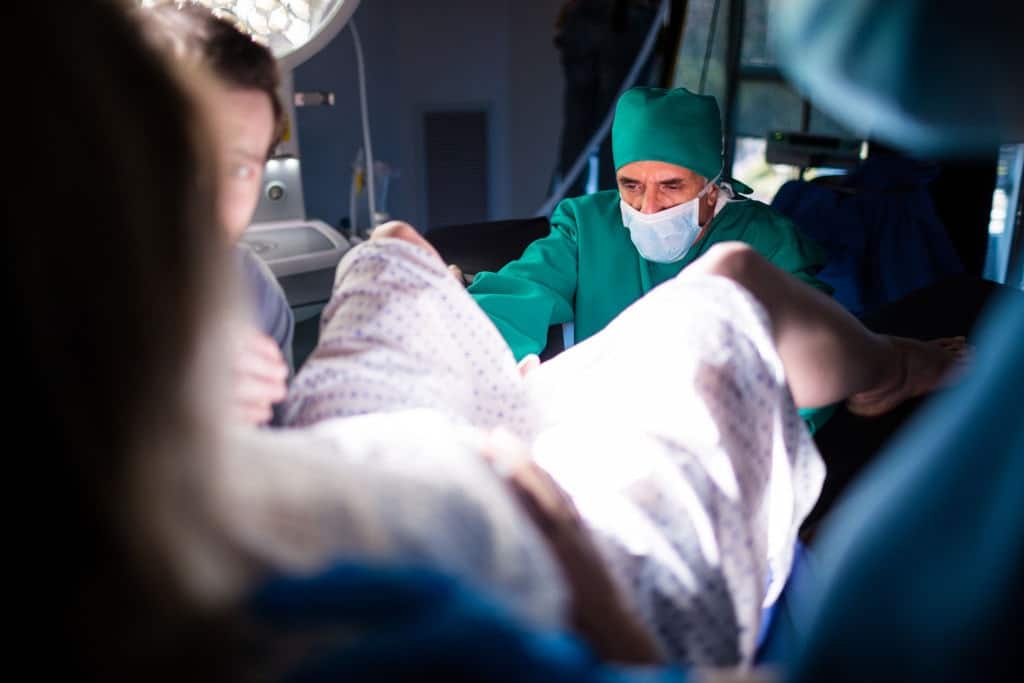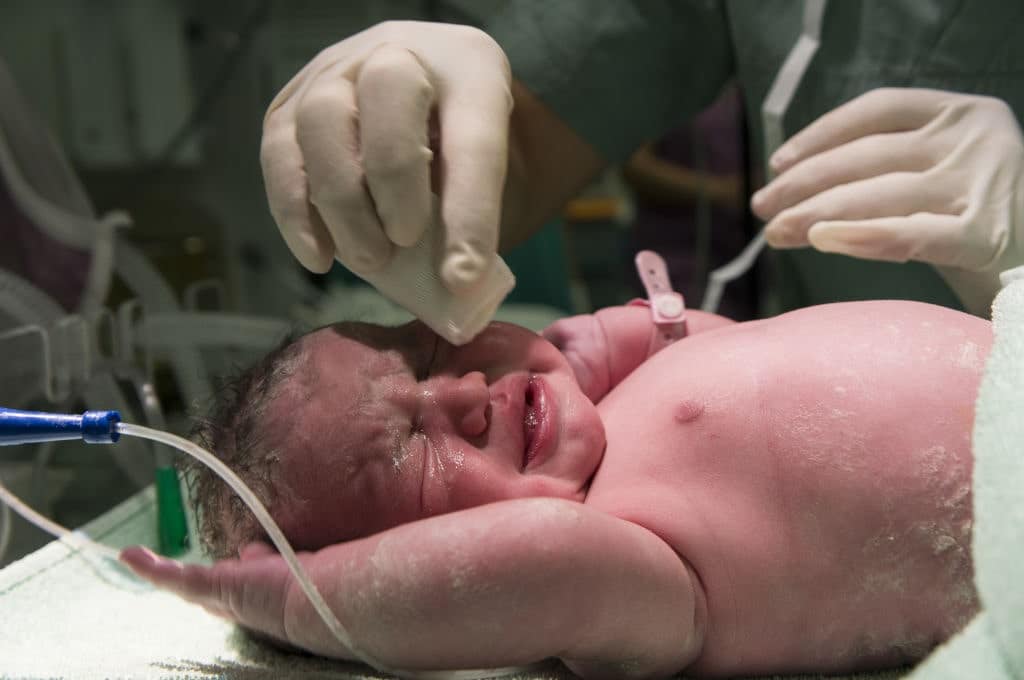During pregnancy, the health of the mother and the fetus is paramount and is usually adequately monitored for safe delivery. Maximal concentration is required to notice abnormalities instantly and swiftly swing into the next line of action. Sometimes, everything is fine until the last few minutes of delivery. In some instances, abnormalities spring from the umbilical cord, which attaches the mother and the child. Thus, causing nuchal cord birth injury.
A case in point is Bynum v. Gregory.
In the instant case, the delivering obstetrician not only committed medical negligence but also provided an intentional misrepresentation of the cause of the baby’s conditions after the birth.
What is Nuchal Cord Injury?
A nuchal cord birth injury results from the umbilical cord wrapping around the baby’s neck during delivery.
The umbilical cord is the delicate tube that links the mother and the fetus during pregnancy. As the fetus grows inside the mother’s womb, the umbilical cord unites the placenta of the mother with the fetus. It supplies nutrients and oxygen to the developing fetus throughout the pregnancy.
The baby’s umbilical cord is cut and clamped after birth, leaving a stump that eventually heals to become the belly button.
According to Undark, nuchal cords affect up to 37 percent of births. The severity of the nuchal cord also contributes to this number.
A nuchal cord can be either type A or type B. Type A nuchal cord is easy to unravel from the baby’s neck. However, type B is difficult to unravel and may require an emergency cesarean session.
What makes nuchal cords difficult to unravel has to do with their positioning and, sometimes, multiple loops around the neck and other parts of the body.
The ability of the obstetrician to monitor the labor process and the fetal heart rate to quickly detect possible fetal distress and the nuchal cord, especially when it’s wrapped too tightly around the neck, will help protect the child from tremendous harm.
However, if the obstetrician overlooks the symptoms and leaves the condition undetected, the child may suffer severe harm. This may cause fetal death or limit the baby’s cognitive functions as they grow- if they survive.
If a child sustains a nuchal birth injury due to the medical negligence of the medical practitioner in charge of delivery, medical animation can help illustrate the negligence involved in the case.
Illustrating Standard Procedural Action After Nuchal Cord Detection In Court
When a medical malpractice case is brought before a court, one of the issues for discussion is whether the medical doctor followed the standard procedure.
Some of the risk factors for the nuchal cord that the obstetrician should notice include a large baby, a twin, excessive amniotic fluid, poor cord structure, excessive fetal movement, and a long umbilical cord.
The use of medical animation can help show the standard procedure required of the obstetrician in the case of a nuchal cord and how they deviated from the process.
If a baby’s nuchal cord becomes locked or tight during birth, the doctor may try a somersault delivery before considering alternative options. During vaginal delivery, a somersault involves pushing the infant’s head to the side, toward the mother’s thigh. Typically, during birth, the obstetrician would drag down the baby’s head.
Pushing their head to one side helps the remaining part of the body to tumble out. This prevents the cord from becoming any tighter and allows the doctor to unwind the nuchal cord.
Somersault deliveries may not always go as planned. Significant complications can arise if the cord is wrapped around the baby’s neck for an extended period. A doctor may be forced to cut the umbilical cord sooner than is recommended.
Cutting the umbilical cord too soon may cause neonatal anemia.
If a doctor notices that a newborn infant is in distress, an emergency C-section may be performed.
Neglecting to follow the right standard of care while subscribing to haphazard treatment methods can cause damage to the baby.

What Happens When There’s Nuchal Cord Medical Malpractice?
When a nuchal cord injury results from medical malpractice, it can be very harmful to the child, most times leading to a lifetime of unaccomplished living with 24/7 assistance.
Some of the injuries that can be sustained after nuchal cord malpractice include the following:
- Cerebral palsy
- Seizures
- High fever
- Motor disorders
- Bluish skin color
- Intellectual disorders
- Limpness
- Low blood pressure
- Organ failure
- Abnormalities in the heart
- Meconium aspiration syndrome
- Developmental delays.
In the earlier-mentioned case of Bynum v. Gregory, the obstetrician employed a fetal monitor to determine when the baby’s heartbeat became depressed. This depression resulted from the nuchal cord, which restricted the baby’s breathing.
Due to a sluggish response to the complication detected by the monitor, the baby was delivered not breathing, stained with meconium, and in distress. The child later suffered a brain injury due to anoxia (lack of oxygen) and convulsive seizures.
Even though the doctor fully noted this condition, he misrepresented it as spinal meningitis to the mother. The former claimed the nuchal cord was not too tight to have been able to cause harm and the actual cause of injury was spinal meningitis, which was not the case.
In other instances, the tightness of the nuchal cord and the doctor’s failure to resort to alternative birth options may lead to stillbirth or death in the later years due to the injury.
In the case of Dunlap v. Cassia Memorial Hospital, the child passed on 12 years later due to the nuchal cord injury (intrauterine hypoxia) sustained at birth.
Medical animation can be used in cases like this to portray negligence and the injury sustained.

Conclusion
After birth, every parent desires to raise a healthy child with access to quality education, friendship, interests, and life. But a nuchal cord injury may end the baby’s life. For survivors, it may limit the child to a life where they can’t even function, needing everyday assistance.
Speech, movement, and cognitive functions can be heavily inhibited, canceling the possibility of a future career or earning power. With medical animation, the extent of the damage can be portrayed by helping the victim acquire enough compensation for all necessary treatment, assistance, and even wrongful death.
Fox-AE is a trial animation company that provides demonstrative medical exhibits for parties involved in a case. With our team of medical animators, you can be assured of a winning case and a heavy medical settlement for your child’s nuchal cord injury.





